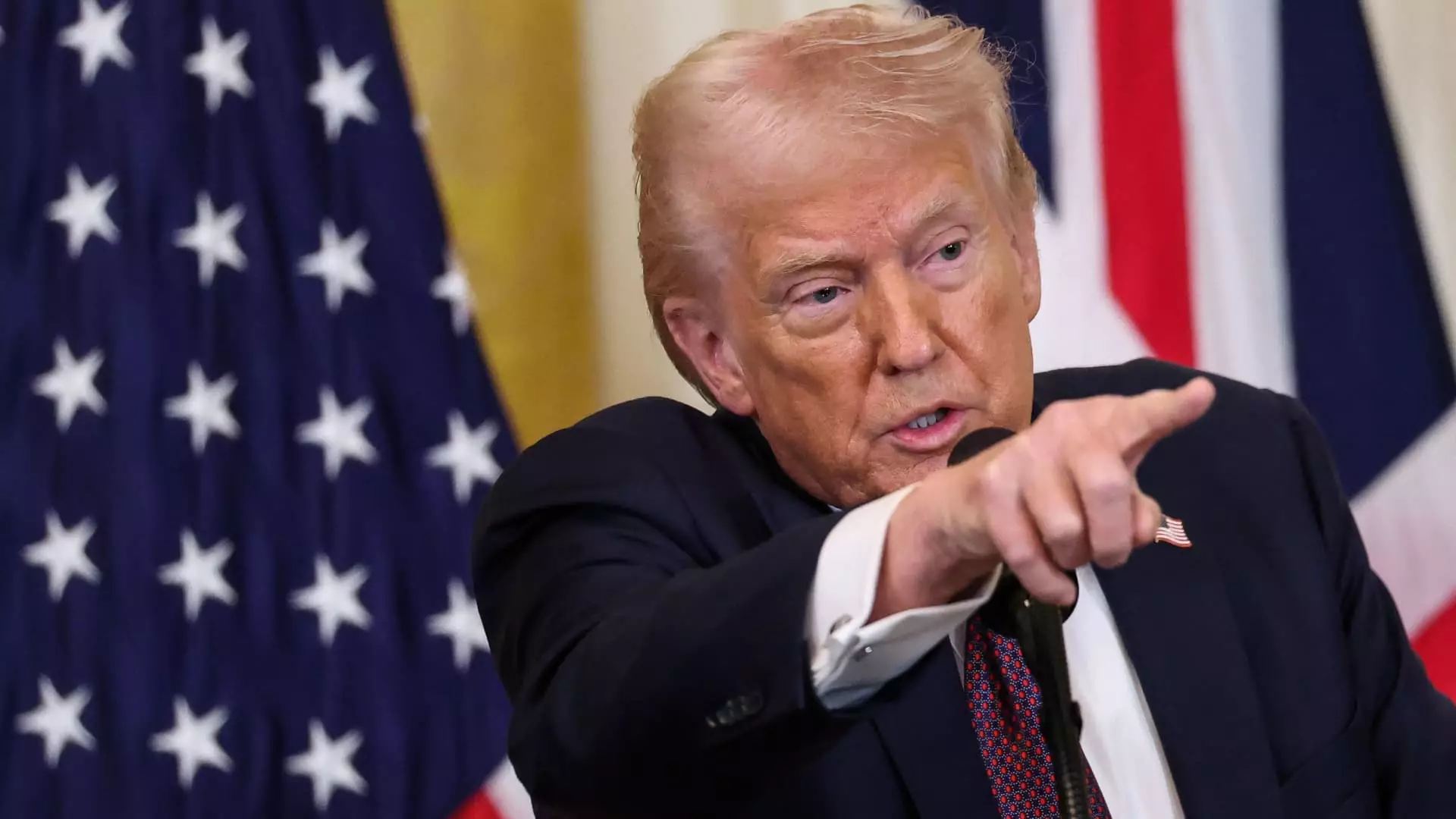For numerous years, the “Fed put” has been regarded as a buffer between investors and market downturns, effectively providing assurance that the U.S. Federal Reserve would step in to support economic stability with monetary easing. However, with the changing dynamics forged by recent fiscal policies and aggressive government spending, another protective mechanism is emerging—the “White House put.” This modern variant signifies a shift in perspective where government intervention, particularly under the current administration, plays a critical role in managing market fears and economic fluctuations.
Market strategist Tom Lee recently articulated the essence of this “White House put,” suggesting that it’s a protective measure originating from the executive branch. This term reflects the potential for fiscal stimulus to emerge in response to challenges posed by tariffs and other economic stressors under President Donald Trump’s administration. Lee emphasized that the current administration aims to circumvent what he labels as “stall speed” in the economy, where growth stagnates, thereby raising the specter of recession. The necessity for fiscal stimulus becomes more pressing as consumer surveys reveal increasing public anxiety regarding inflation and the concrete impacts of tariffs.
Surveys indicate a rising unease among consumers as they face the reality of implementing tariffs, which could potentially stifle economic growth. Although some market indicators have not yet captured the essence of inflation worries, declining bond yields signal that investors are bracing for a downturn. Lower yields denote a flight to safety and an anticipation of an economic slowdown, which contradicts previous bullish sentiment about the market’s resilience. The fear of inflation returning haunts policymakers, underscoring the precarious balance they must maintain to sustain economic momentum.
As adjustments to projections materialize, it becomes clear that recent economic data is unsettling stakeholders. For instance, the Atlanta Fed’s GDPNow tracker dramatically estimated a 1.5% contraction for the first quarter, signifying that consumer spending has indeed faltered. In this context, Lee posits that ongoing tariffs may depress growth rates while inadvertently fostering a climate that prompts the Fed to adopt a more dovish stance on interest rates. The intrinsic link between trade policies and monetary policy illustrates the delicate nature of economic coordination in these uncertain times.
Throughout this year, the S&P 500 has exhibited volatility amid these evolving economic conditions. Bank of America’s Michael Hartnett has pointed out a specific threshold—the “first strike price” of the “Trump put”—near 5,783 for the S&P 500, a level just below previous stability markers. This reference underscores the expectation that, should the index dip below this threshold, significant discussion surrounding governmental support for the markets would be warranted. Investors crave assurance from policymakers, particularly under the backdrop of a fluctuating market driven by tariffs and other regulatory actions.
The effectiveness and clarity of governmental support remain points of contention among investors. The recent announcements regarding increased tariffs on Canada, Mexico, and China have raised eyebrows and intensified market anxiety. Conversely, actions taken by the Trump administration to alleviate regulatory burdens and hint at the continuation of tax cuts from 2017 may foster investor confidence. This duality of intervention poses questions about the direction in which current policies will steer the economy and market sentiment.
As the financial landscape evolves, investors must navigate a complex interplay of fiscal and monetary policies that shape market dynamics. The emergence of the “White House put” as a counterbalance to the traditional “Fed put” reflects the growing importance of government play in influencing economic stability. As uncertainty looms, understanding these new dynamics becomes imperative for investors aiming to adapt their strategies in an increasingly volatile environment. Moving forward, the integration of fiscal measures and monetary policy will likely define the contours of economic resilience amid ongoing challenges, signifying a new era in financial protections.

